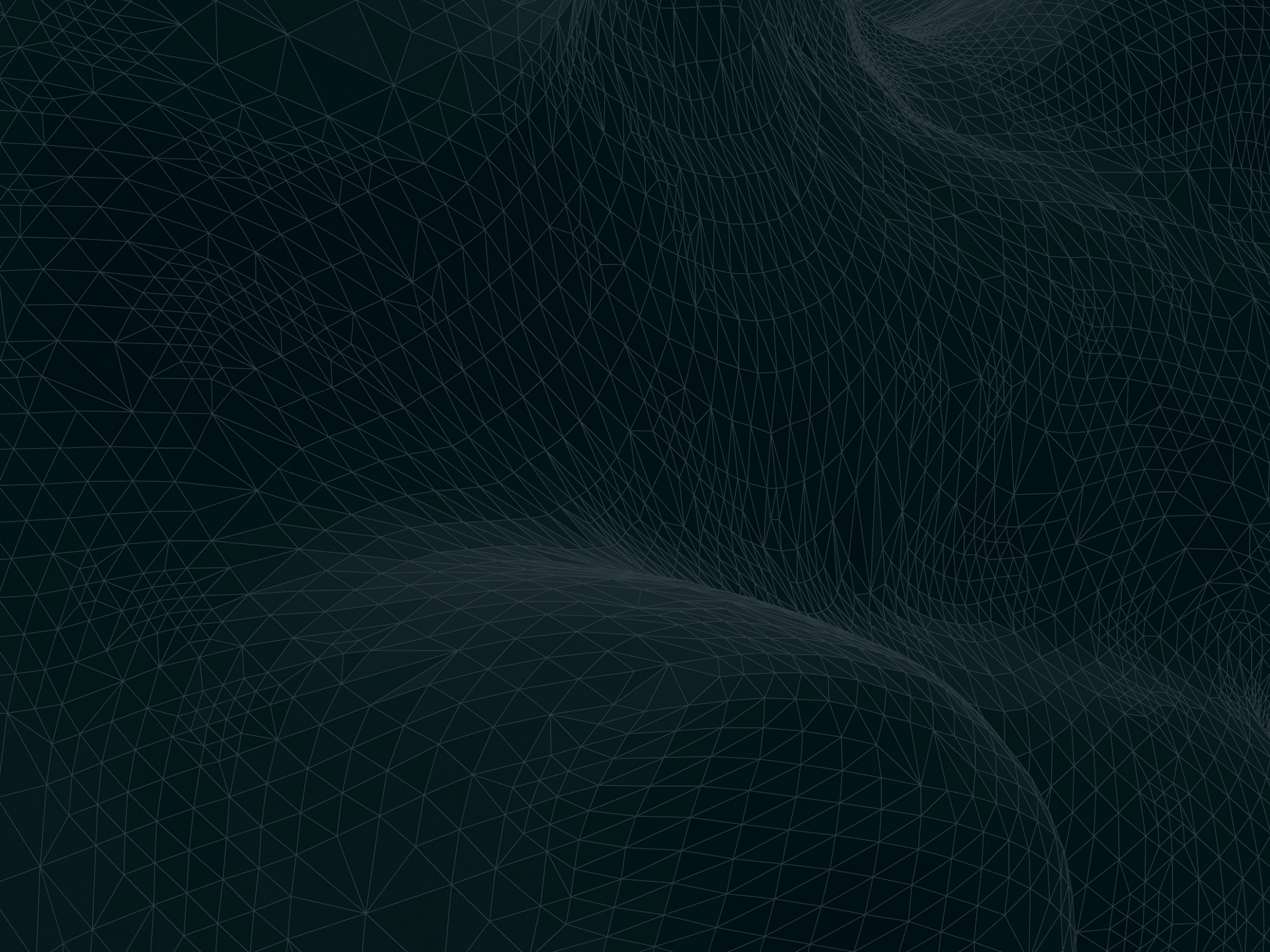Affiliations
Research group
I am heading the geometric data analysis and processing group at ZIB. We develop concepts and practical solutions for analyzing and processing geometric data, such as shapes, graphs, and abstract data sets alike. We take advantage of the rich structure in the data via intrinsic approaches to ensure consistency and reduce bias, thereby improving analytical performance. To this end, the group builds on and aims to extend the theory, algorithms, and applications of non-Euclidean statistics, geometric deep learning, and applied geometry.
Current applications revolve around shape analysis in the context of medicine, archaeology, and biology. A particular focus is the study of data together with co-varying parameters such as time. Examples include regression of disease-specific shape variations, morphological classification, and identification of systematic differences at the population level.
Current projects
Geometric Learning for Single-Cell RNA Velocity Modeling (MATH+ AA1-20)
Project Head together with D. Baum, T. Conrad, C. Schütte, and V. Sunkara
Recent advances in Single-Cell RNA sequencing allow to infer both the gene expression of a cell and the so-called „velocity vector“ initializing the changes in that expression. In this project, we investigate how to leverage the resulting discrete vector field from a set of observations in order to recover the dynamics of the cells, that is their trajectory in the space of gene expressions. One of the challenges of this question lies in the non-linearity of the data. Indeed, the gene expression of a given type of cell has been modeled in the literature as a point of some lower-dimensional submanifold — referred as the „phenotypic manifold“ — of the space of all (theoretically) possible gene expressions. Given the discrete and noisy nature of such data, it is particularly crucial to take full account of their underlying geometry to obtain correct estimates of their dynamics.
Axes/adzes and grinding stones as tools of the Neolithisation in Central Europe. An integrative approach to functional analysis through Geometric Morphometrics, Use-Wear Analyses and Experimental Archaeology (Weave: DFG/FWF)
Project Head together with L. Dietrich and M. Brandl
Within this interdisciplinary, collaborative research project, we will develop mathematical and algorithmic solutions for analyzing adzes/axes and grinding stones – central technological innovations and core parts of the Neolithization process. To this end, we will derive an integrative approach for the analysis of functional differentiations and adaptations of such tools through Geometric Morphometrics, Use-Wear Analysis, and Experimental Archaeology. This will allow us to investigate uses, working techniques, intensities of use, and complete life cycles providing a deeper understanding of the socio-cultural and economic importance of these tools during the Neolithization and the regional adaptation strategies enabled by them.
Model-Regularized Learning Of Complex Dynamical Behavior (BIFOLD)
Project Head together with C. Schütte and T. Conrad
This project is planned to couple machine learning approaches, especially from the field of Deep Learning, with (reduced) ODE models in the sense that the model becomes an integral part of the learning iteration. In this way, the training of the deep network can build on the available – but possibly small and incomplete – data, but is additionally regularised by the relevant physics. For many scenarios, these reduced (or coarsened) models are available. Although they are significantly less complex and often based on only a few basic structural properties, they still contain the basic physics or structure of the problem. The developed methods will then be used to analyze real-world data, e.g., from opinion formation in social networks, the dynamics of molecules, or single-cell analysis.
Past projects
Manifold-valued Graph Neural Networks (MATH+ AA5-3)
Project Head together with G. Steidl
Geometry-aware, data-analytic approaches improve understanding and assessment of pathophysiological processes. We will derive a new theoretical framework for deep neural networks that can cope with geometric data and apply it for classification of musculoskeletal illness from both shape and movement patterns.
A Soft-Correspondence Approach to Shape Analysis (MATH+ EF3-13)
Project Head together with D. Baum, A. Bobenko, and F. Fless
Despite many advances, frameworks for geometric morphometry still rely on point-to-point correspondences between shapes, either explicitly in form of homologous landmarks or implicitly in terms of diffeomorphisms of the ambient space. Point-to-point correspondences, however, have fundamental limitations that prohibit the analysis of shape collections with incomplete or topologically varying objects. The goal of this project is to extend the scope of shape analysis methodology in order to overcome these limitations.
Spline Models for Shape Trajectory Analysis (MATH+ EF2-3)
Project Head together with H.-C. Hege, A. Hennemuth, and F. Fless
The aim of the project is the development of novel methods for the identification of systematic differences in empirically defined distributions of shape trajectories. The forcus will be on the derivation of hierarchical statistical models that account for the correlation inherent to time series of shapes. To this end, we will generalize the mixed-effects framework to manifold-valued data based on Riemannian spline models. The development will be driven by applications from cardiology and archaeology.
Analysis of Empirical Shape Trajectories (ECMath/MATH+ CH15)
Project Head together with H.-C. Hege and T. Sullivian
The focus of this project is to develop new mathematical methods for the analysis, processing and reconstruction of empirically defined shape trajectories. By treating the trajectories as curves in shape space, we plan to exploit the rich geometric structure inherent to these spaces. In consequence, we expect the derived schemes to benefit from a compact encoding of constraints and a superior consistency as compared to their Euclidean counterparts.
In-vivo soft tissue kinematics from dynamic MRI
The aim of this project is the development of MRI-based methods and technologies for the non-invasive in-vivo assessment of mechanical loads in soft tissue structures of the knee joint. Given the short acquisition times available in the dynamic imaging setup only partial information (low resolution, 2D slices instead of 3D volume) can be acquired. Therefore, specialized reconstruction methods have to be developed to extract the motion of soft tissues from the incomplete data. The obtained time-dependent configurations of the structures can then be interpreted as shape trajectories allowing morphometric analysis employing manifold-valued statistical tools.
KneeLaxity – Dynamic multi-modal knee joint registration
The goal of the project is to characterize knee joint laxity in vivo as well as their consequences on the onset and progression of osteoarthritis. To this end, patient specific 3D joint structures are to be matched to 2D fluoroscopic images. While MRI provides a non-invasive imaging basis, registering the according images to fluoroscopic data automatically is a challenging task as the acquired information does not map directly to the X-ray absorption properties of the imaged tissue. Based on the developed 3D reconstruction techniques we will furthermore assess and improve skin marker-based reconstruction methods.
X-ray based anatomy reconstruction with low radiation exposure
This project aims at improving 3D reconstruction methods from 2D X-ray images. A special focus is on finding a small set of X-ray imaging directions for a sufficiently accurate 3D reconstruction of anatomical structures, thus reducing the radiation dose of X-ray based medical imaging. We will improve the reconstruction accuracy obtained with existing 3D-from-2D techniques and the data acquisition in form of an optimal design of experiments to reduce the radiation dose. Within the project we are aiming at the development a fast design optimization algorithm to optimize individual imaging plans on the fly.
3D reconstruction of anatomical structures from 2D X-ray images
2D X-ray images play a crucial role for the diagnosis and the therapy planning in orthopaedics. This imaging technique is not only widely available but is also, in contrast to more advanced 3D imaging methods like CT or MRI, considered a fast and inexpensive procedure. However, musculoskeletal anatomy is inherently 3D, and accurate assessment of the patients anatomy is therefore largely dependent upon the individual surgeon’s experience and ability to assess the 3D anatomy by analysis of 2D images only. To overcome this limitation, and in order to enable reliable, quantitative planning of surgical interventions that is less dependent upon the experience of the surgeon, the goal of this project is to provide a method aimed at 3D reconstruction of musculoskeletal anatomy from standard 2D projection X-ray images.
MATHEON F4 – Geometric Shape Optimization
Geometric shape optimization is concerned with novel discrete surface energies and computational geometry algorithms for processing and optimizing polyhedral meshes in industrial applications such as computer aided design (CAD) and computer graphics. The main focus of this project addresses the development of efficient mesh processing algorithms and robust modeling tools. The mathematical tools are novel discrete differential and curvature operators.
MATHEON F9 – Trajectory Compression
For large, nonlinear, and time dependent PDE constrained optimization problems with 3D spatial domain, reduced methods are a viable algorithmic approach. The computation of reduced gradients by adjoint methods requires the storage of 4D data, which can be quite expensive from both a capacity and bandwidth point of view. This project investigates lossy compression schemes for storing the state trajectory, based on hierarchical interpolation in adaptively refined meshes as a general predictor.
MATHEON F11 – Accelerating Curvature Flows on the GPU
The goal of this project to speed up the computation of curvature flows, previously implemented on the CPU. This project will in particular demonstrate numerics that fully utilize the SIMT (single-instruction, multiple-thread) architecture of modern Graphics cards (GPU), and provide a proof-of-concept implementation of advanced geometry processing on the GPU. In particular, industrial design and CAD companies could use such fast curvature flow or smoothing algorithms for their laser scanners to quickly capture models accurately and cheaply compared to their current setup.
Past Industry Cooperations
Zalando
We investigate and derive methods to accurately simulate the fitting of cloth. To this end, we develop methods to generate 2D grids from 3D scans, to simulate contact mechanics, and to visualize the results.
TELES AG
The aim of this project is the development of state of the art visualization methods for semantically marked-up data in interdisciplinary applications, with a focus on data that comes from analyzed and preprocessed patent documents using the Teles „Facts Screening & Transforming Processor“ (FSTP) strategy. This includes the development of geometrically motivated algorithms on networks with a view towards their efficient implementation and interface design to provide real-time user interactivity. Inspiration comes from hyperbolic and complex geometry as well as from unconventional techniques in information visualization.
Work in the academic community
International Program Committee
I have been part of the International Program Committee for the International Conference on Geometric Modeling and Processing (GMP) 2025 as well as the Eurographics Short Papers track in 2019 and 2020.
Editorship
I am Review Editor for Frontiers in Computer Science (specialty section Computer Graphics and Visualization and Frontiers in Radiology (specialty section Artificial Intelligence in Radiology. Furthermore, I am Topic Editor for Applied Sciences.
Reviewing
I am providing reviewing services for various scientific journals and conference proceedings, including Elsevier Medical Image Analysis, ACM Siggraph/Transactions of Graphics, Eurographics, Symposium on Geometry Processing, Computer Graphics Forum, and EuroVis.






